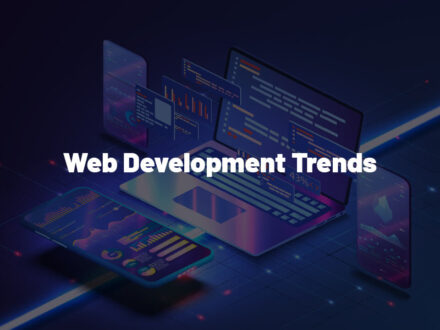
Stay Ahead of the Curve with Emerging Technologies, Coding Innovations, and Optimization Strategies
The digital landscape is evolving faster than ever, and website development is at the heart of this transformation. By 2025, businesses and developers must adapt to groundbreaking trends, tools, and user expectations to remain competitive. From AI-driven interfaces to decentralized web architectures, this in-depth guide explores the web development trends, coding languages, and strategies—like WordPress development, eCommerce websites, and website speed optimization—that will dominate 2025.
1.1 AI-Powered Development Tools
Artificial Intelligence (AI) is revolutionizing website development by automating repetitive tasks. Tools like GitHub Copilot and ChatGPT-5 now generate code snippets, debug errors, and even design user interfaces. For instance, platforms like Wix ADI (Artificial Design Intelligence) leverage AI to create personalized websites in minutes, reducing manual coding efforts.
1.2 Voice Search Optimization
With 55% of households expected to own smart speakers by 2025 (Statista, 2023), voice-activated interfaces are critical. Developers are integrating natural language processing (NLP) and schema markup to optimize sites for voice queries, ensuring compatibility with Alexa, Google Assistant, and Siri.
1.3 Progressive Web Apps (PWAs)
PWAs bridge the gap between websites and mobile apps, offering offline functionality and push notifications. Companies like Starbucks saw a 2x increase in user engagement after adopting PWAs (Google Developers Case Study).
1.4 Web3 and Decentralized Platforms
Blockchain technology is reshaping custom web solutions with decentralized apps (dApps) and tokenized ecosystems. Platforms like Ethereum and Solana enable secure, transparent transactions, while IPFS (InterPlanetary File System) revolutionizes data storage.
1.5 Motion UI and Immersive Experiences
Advanced animations, 3D elements, and augmented reality (AR) are enhancing user engagement. Libraries like Three.js and React Spring empower developers to create fluid, interactive designs without compromising website speed optimization.
1.6 Cybersecurity Integration
As cyber threats grow, frameworks like OWASP Top 10 compliance and HTTPS encryption are non-negotiable. Automated security audits via tools like Snyk are becoming standard in web development workflows.
1.7 Low-Code/No-Code Platforms
Democratizing website development, platforms like Webflow and Bubble enable non-developers to build functional sites. However, custom web solutions still require traditional coding for complex features.
2.1 JavaScript Dominance Continues
JavaScript remains the backbone of front-end vs back-end development. Frameworks like React, Vue.js, and Svelte are evolving to support real-time applications and server-side rendering (SSR).
2.2 Rust for Performance-Critical Systems
Rust’s memory safety and speed make it ideal for back-end systems. Companies like Microsoft and Dropbox use Rust to build secure, high-performance tools (The Rust Foundation).
2.3 Python’s AI and ML Capabilities
Python dominates AI-driven website development with libraries like TensorFlow and PyTorch. Its simplicity also fuels backend frameworks like Django and Flask.
2.4 TypeScript Adoption Soars
TypeScript’s static typing reduces runtime errors, making it a favorite for enterprise-level projects. Over 80% of developers now prefer TypeScript for large-scale apps (2023 Stack Overflow Survey).
3.1 Front-End: Beyond Aesthetics
Modern front-end development focuses on performance and accessibility. Developers use tools like Lighthouse and Web Vitals to audit website speed optimization, while CSS-in-JS libraries streamline responsive design.
3.2 Back-End: Scalability and Security
Back-end systems prioritize microservices architectures and GraphQL APIs. Platforms like AWS Lambda and Firebase enable serverless computing, reducing infrastructure costs.
3.3 The Rise of Full-Stack Developers
Blurring front-end vs back-end boundaries, full-stack developers proficient in frameworks like Next.js and Nest.js are in high demand.
4.1 Headless WordPress
Decoupling the front-end and back-end, headless WordPress allows developers to use React or Vue.js for dynamic interfaces while retaining WordPress’s robust CMS capabilities.
4.2 AI-Powered Plugins
Plugins like Akismet and WordLift now leverage machine learning for spam detection and content personalization, enhancing eCommerce websites and blogs.
4.3 Gutenberg Editor Advancements
The block editor now supports dynamic data integration, making it easier to build complex layouts without custom code.
5.1 AI-Driven Product Recommendations
Tools like Shopify’s Sensei analyze user behavior to suggest products, boosting conversion rates by up to 35% (Shopify Blog).
5.2 AR/VR Try-Ons
Augmented reality lets users visualize products in real-time. IKEA’s AR app, for example, increased engagement by 300% (IKEA Case Study).
5.3 Unified Omnichannel Platforms
Integrating social media shops (Instagram, TikTok) with eCommerce websites ensures seamless customer journeys.
6.1 Edge Computing
CDNs like Cloudflare Edge reduce latency by processing data closer to users.
6.2 Image and Video Compression
WebP and AVIF formats cut load times by 50% compared to JPEG (Google Developers).
6.3 Lazy Loading and Code Splitting
Frameworks like React implement lazy loading to prioritize above-the-fold content.
Businesses are ditching one-size-fits-all platforms for custom web solutions built with Jamstack (JavaScript, APIs, Markup). Headless CMS platforms like Contentful and Strapi offer flexibility, while DevOps pipelines ensure rapid deployment.
The website development landscape of 2025 demands agility, innovation, and a user-centric approach. Whether you’re leveraging WordPress development, optimizing eCommerce websites, or adopting custom web solutions, staying informed is key. By mastering emerging coding languages, balancing front-end vs back-end priorities, and prioritizing website speed optimization, developers and businesses can thrive in this dynamic era.
Ready to future-proof your web presence? Start experimenting with these trends today.